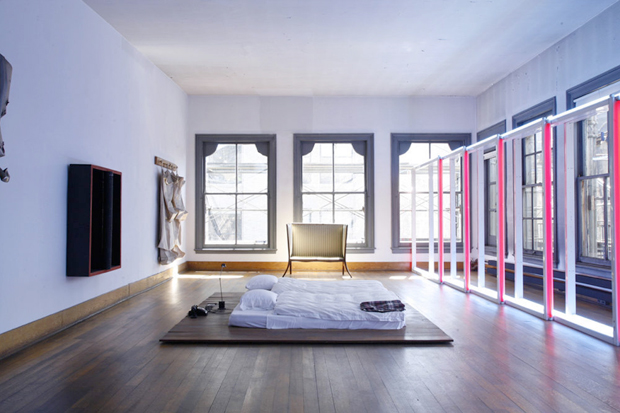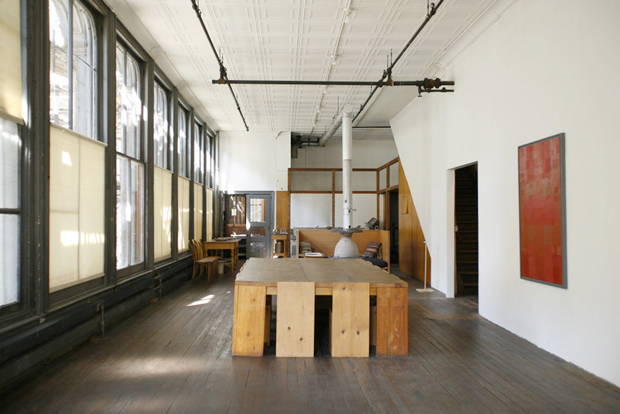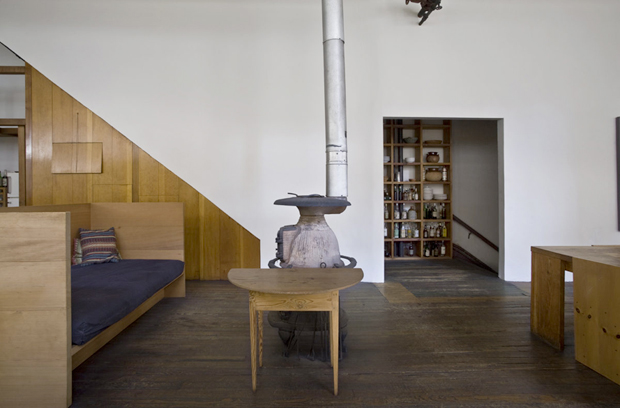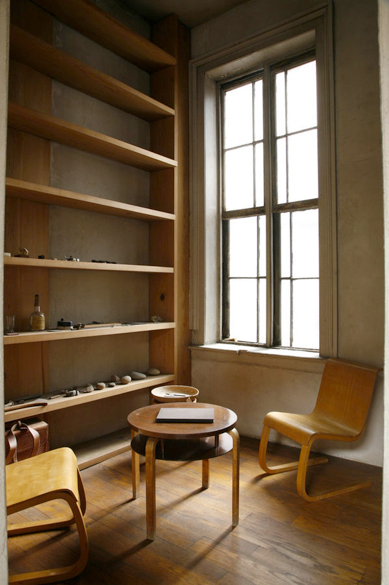
Donald Judd's home opens to the public in June
Three-year $23 million restoration effort by his children will recreate artist's living and working environment
In 1968 the Minimalist artist Donald Judd bought a ramshackle former department store in New York's SoHo and transformed the space into a vast home studio. Ever the precisionist, Judd quickly cleaned and repaired ailing sections of the building. Then he installed works by Dan Flavin, Carl Andre and Claes Oldenburg, as well as some of his own, creating an astounding private collection that, since the artist's death in 1994, has been witnessed only by a fortunate few.
Thankfully, that's about to change. After a three-year, $23 million restoration effort, spearheaded by the artist's son, Flavin, and his daughter, Rainer, Judd's residence will be opened to the public again this June. Visitors will experience the building exactly as it was in 1994, down to the almost imperceptible last details. Judd's pencils remain on his drafting table, for instance, and his bottles remain in his store cupboards. Even his bed sits in exactly the same place – starkly white in the middle of one of the building's vast rooms.

“If you want to know about whether we decided to make a change or not make a change, it depends on what square inch of this place you’re talking about,” Flavin Judd told the New York Times, emphasising the precision with which the project has been undertaken.
“This has all been toward the goal of having people experience this place as if none of these things we had to do were ever done," Rainer Judd added. "And from the beginning it’s been a battle between preserving the art and preserving the building.”
The building really is as important as the art. 101 Spring, as Judd's residence is known, is the last cast-iron building still in good condition in the surrounding neighbourhood, one that artists sought out in the 1960s for its then-raw industrial spaces, but which is now filled with shops and restaurants and re-developed real estate.

The building stands as if transported into the future from a previous era, but although it looks exactly how it once did, the Judd siblings have been forced into making a few changes. The whole façade of the building, left to crumble over the last 20 years, has been fully and very handsomely renovated, and the building is now climate controlled, to protect the art, which means windows can no longer be opened. There are also a few Exit signs, a necessary evil that comes with transforming a once private residence into a public museum.
But little does that matter, really- invasive construction has been avoided, and the revamped residence will soon offer visitors not only a glimpse into the expansive and experimental art scene of the 60s and 70s, but also, as the New York Times' Randy Kennedy writes, the chance to "encounter a part of the city’s structural history as re-envisioned by Judd, one of the most important artists of the last half-century, whose architectural interventions have come to be seen almost as important as his Minimalist sculpture."

The term 'minimalism' was coined to describe the work of a group of American artists who, in the 1960s, produced a decidedly unexpressionistic, reductive work with a hard industrial feel. While numerous minimalist painters exist, among them Robert Ryman, Robert Mangold and Brice Marden, most of the key Minimalists - Andre, Flavin, Judd, LeWitt and Morris - produced sculptures or, as some put it, 'specific objects' or 'objects in a world of objects'.
Although none of the artists actually accepted the term 'Minimalism', their common use of serial, modular or repeating forms (from Carl Andre's floor sculptures of readymade bricks or Judd's stacked boxes) as well as the abstraction and industrial production of the work, drew these artists' work together. If you'd like the perfect introduction to and overview of one of the key movements in post-war art check out our book Minimalism.